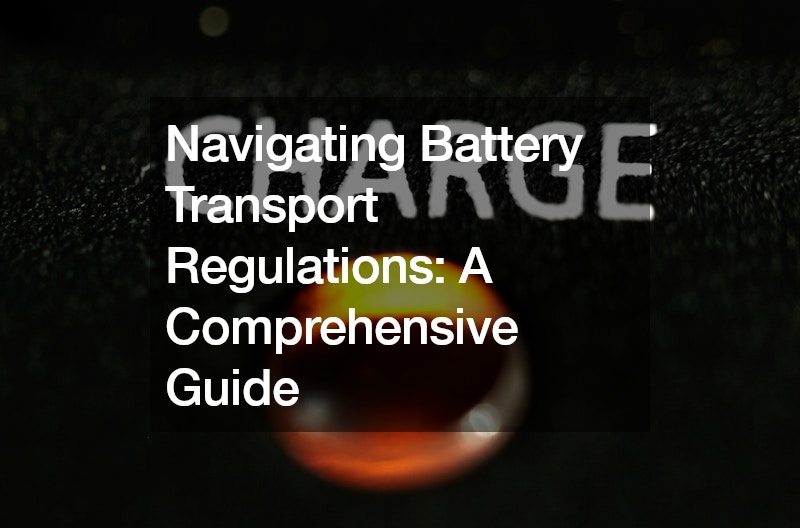The rise of electronics and electric vehicles has fueled a surge in battery usage. But with this convenience comes a responsibility: safe battery transport. Lithium-ion batteries, the dominant force, pose potential hazards if not handled correctly.
To ensure safety and stay compliant, here’s a comprehensive guide to navigating battery transport regulations in the United States.
Understanding the Regulatory Landscape
In the US, several agencies govern battery transport regulations, each with its area of focus:
The Department of Transportation (DOT): The main regulatory body, the DOT oversees all modes of transportation (ground, air, sea) through its Pipeline and Hazardous Materials Safety Administration (PHMSA). The PHMSA issues the Hazardous Materials Regulations (HMR) which classify and regulate the transportation of hazardous materials, including batteries. The Federal Aviation Administration (FAA): The FAA sets specific regulations for transporting batteries by air, focusing on passenger and cargo safety. These regulations are detailed in the Federal Aviation Regulations (FAR). The International Air Transport Association (IATA): While not a US regulatory body, IATA’s Dangerous Goods Regulations (DGR) provide internationally recognized guidelines for air cargo containing hazardous materials, including batteries. Understanding IATA’s DGR is helpful for US shippers exporting batteries by air. Classifying Your Batteries for Transport
The first step is understanding how your batteries are classified under the HMR. Classification is based on factors like chemistry (lithium metal vs. lithium-ion), capacity, and watt-hour (Wh) ratings. The PHMSA provides a Lithium Battery Cell and Battery Classification Flow Chart to help you determine the correct classification https://www.phmsa.dot.gov/regulatory-compliance/phmsa-guidance/advisory-guidance-transportation-batteries-and-battery-powered.
Key Regulations and Requirements
Here’s a breakdown of key regulations and requirements for battery transport, focusing on lithium-ion batteries (the most common type):
Packaging: Batteries must be packaged in strong outer containers that can withstand handling and prevent short circuits. Specific packaging instructions (packing instructions) are assigned based on your battery classification. Marking and Labeling: Packages must be clearly marked and labeled with proper hazard class labels, UN identification numbers, and additional information like quantity and type of batteries. The PHMSA provides specific marking requirements in the HMR. Documentation: Depending on the classification and mode of transport, shipping papers may be required. These documents typically include the shipper’s and consignee’s information, a description of the batteries, and emergency response procedures. Quantity Limitations: There are limitations on the quantity of batteries that can be shipped in a single package or conveyance (vehicle, aircraft, etc.) These limitations vary based on classification and mode of transport. Air Transport Considerations (FAA & IATA):
When shipping batteries by air, additional regulations from the FAA and IATA apply:
Passenger vs. Cargo: Stricter limitations apply to lithium-ion batteries packed with or contained in devices carried by passengers. For larger or higher-capacity batteries, cargo transport may be necessary. State of Charge (SoC): The FAA may require batteries to be shipped at a reduced state of charge to minimize fire risk. Special Permits: Special permits from the FAA may be required for large or high-capacity batteries. Additional Considerations
Training: Personnel involved in packaging, marking, labeling, and shipping batteries may require specific training as mandated by the HMR. Exemptions: Certain exemptions from some regulations may apply for small or consumer-type batteries. Always consult the PHMSA regulations for details. Resources for Staying Compliant
Conclusion
Navigating battery transport regulations can seem complex, but understanding the key players and following the regulations ensures safety and compliance. By utilizing the resources provided and consulting with regulatory experts when needed, you can ensure the smooth and safe transportation of your batteries. Remember, prioritizing safety is paramount, and staying informed is key.
.

